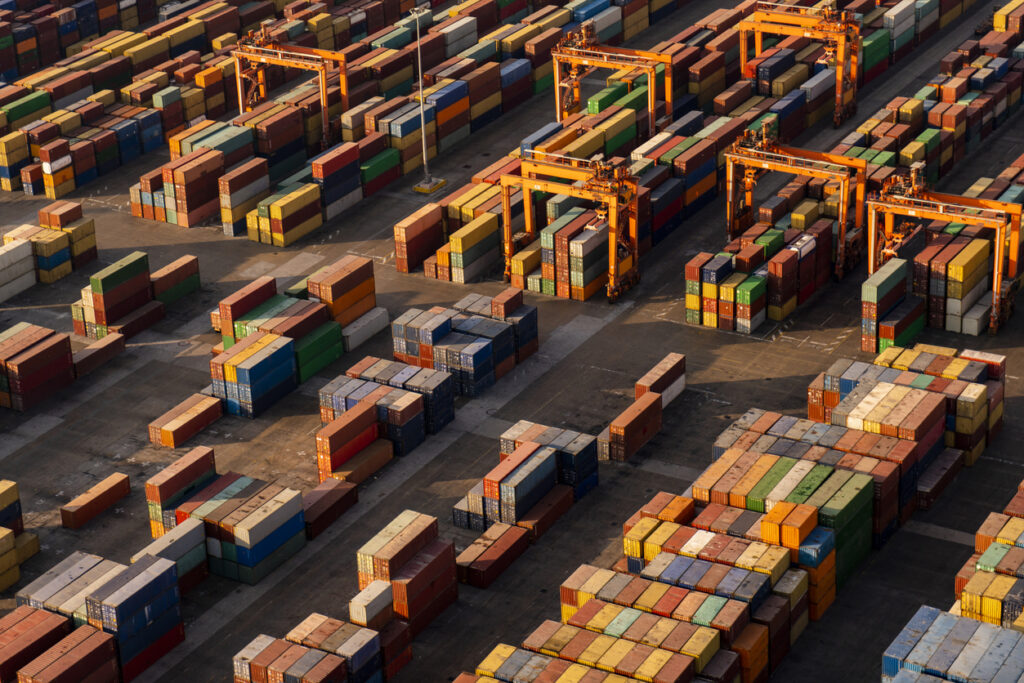Overcoming Cross-Border Distribution Challenges for Product Manufacturers
Let's Talk
Expanding into international markets offers product manufacturers exciting opportunities. However, knowing where to start is half the challenge. The North American Free Trade Agreement (NAFTA) makes Canada an attractive foray into the international marketplace. Effective on January 1, 1994, NAFTA lifted the tariffs on most goods produced by the U.S., Canada, and Mexico, eliminating global distribution challenges and increasing trade, economic output, foreign investment, and competitive consumer pricing.
Let’s take the scenario of a furniture manufacturer in Raleigh, N.C., who needs help distributing their product to Toronto, Ontario, Canada. It’s their first time shipping their furniture abroad, and they need assistance to overcome the challenges associated with cross-border shipping. While NAFTA opens the door to new opportunities, that doesn’t mean it’s smooth sailing for manufacturers dealing with global distribution.
Some of the global distribution challenges a furniture manufacturer might face include navigating customs and regulatory compliance, coordinating the movement of bulky furniture across the border, and minimizing shipping costs.
What are the best transportation modes for cross-border shipping?
Sticking with our example of a furniture manufacturer in North Carolina that wants to distribute its products to Toronto, both full truckload (FTL) and less-than-truckload (LTL) are viable options for international shipping. Depending on the carrier, border processing, and the chosen service level, it can take between 3 and 7 business days to move ground freight from Raleigh to Toronto.
“Costs vary based on shipment size and volume,” said Robert Khachatryan, CEO and founder of Freight Right Global Logistics. “For example, an LTL shipment of smaller items can range from $150 to $700 per pallet, while larger shipments requiring FTL may start at $1,200 to $2,500 for a full truckload.”
What customs and regulatory compliance rules apply?
Shipping across the border requires essential documents including a commercial invoice, bill of lading, certificate of origin, and packing list. “Some items may require additional certificates based on materials,” said Khachatryan. “Household goods and personal effects would generally require some sort of manifest or a packing list showing values of the items.”
For new items, Canada typically charges 5% GST on furniture imports. Duties vary by material type and country of origin. Goods manufactured in the U.S. are generally duty-free to import to Canada thanks to NAFTA.
Additionally, furniture must meet flammability standards for upholstered items and may require labels indicating materials, origin, and care instructions. Khachatryan recommends consulting with an attorney for any new products introduced to the Canadian market for sale to ensure compliance with safety standards and labeling requirements.
For smooth customs clearance, complete all documentation and submit declarations in advance. “Electronic Data Interchange (EDI) can speed up processing, and correctly classifying furniture under the HS code is essential to avoid delays,” said Khachatryan. “Work with a licensed customs broker and get them to review and approve the documents beforehand.”
What are the best practices for packaging and handling for shipping?
Using high-density foam, corner protectors, and heavy-duty cardboard or wood crates to minimize damage is recommended for cross-border shipping. “Secure items on pallets to prevent shifting during transit,” advised Khachatryan. “Fragile or high-value items should be labeled clearly. Avoid stacking to prevent crushing.”
Double-check loading and secure items tightly within containers to prevent movement, which can damage items in transit. These measures help overcome global distribution challenges related to handling.
Standard carrier liability may not fully cover the shipment’s value. Document and photograph items before shipping. “Consider all-risk cargo insurance for comprehensive coverage on damage or loss,” said Khachatryan. “Coverage typically costs 0.5% of the shipment’s value.”
Real-time GPS tracking and electronic logging devices (ELD) allow precise monitoring of shipments. Integrating your system with logistics platforms via API connections allows automatic updates on inventory levels and order statuses, said Khachatryan.
How do you find warehousing options near your international distribution site?
Facilities such as ShipCanada offer short-term and long-term warehousing in Toronto, providing flexibility based on a furniture manufacturer’s needs. “Average warehousing rates in Toronto range from $15 to $25 per pallet per month, with additional costs for handling and temperature-controlled storage,” said Khachatryan.
For last-mile delivery service needs in the Toronto area, GoBolt and Day & Ross offer reliable assistance, Khachatryan said. “These providers specialize in large-item residential delivery and installation.”
Partnering with carriers offering cross-docking in Toronto can reduce warehousing needs and lower costs by combining smaller shipments into larger loads, thus addressing some global distribution challenges.
Eliminate Global Distribution Challenges
Partnering with an experienced international relocation service can significantly ease the transition into the Canadian market. Product manufacturers get the help they need to effectively navigate the complexities of cross-border logistics for a smooth transition.
Getting expert guidance on international trade allows businesses to focus on growth while leaving the logistical challenges to the professionals, including overcoming global distribution challenges.
Interstate International Can Help You Overcome Global Distribution Challenges
Navigating international markets requires a reliable and experienced partner who understands the complexities of cross-border shipping. Interstate International is your trusted choice for cargo shipping, offering comprehensive logistics solutions tailored to your needs. With decades of experience and expertise in navigating customs, trade agreements like NAFTA, and international shipping regulations, we ensure your products reach their destination efficiently and securely. Whether you’re expanding into Canada, Mexico, or beyond, our commitment to reliability, transparency, and exceptional service makes us the ideal partner for your global distribution needs. Let us help you turn international opportunities into seamless success.
